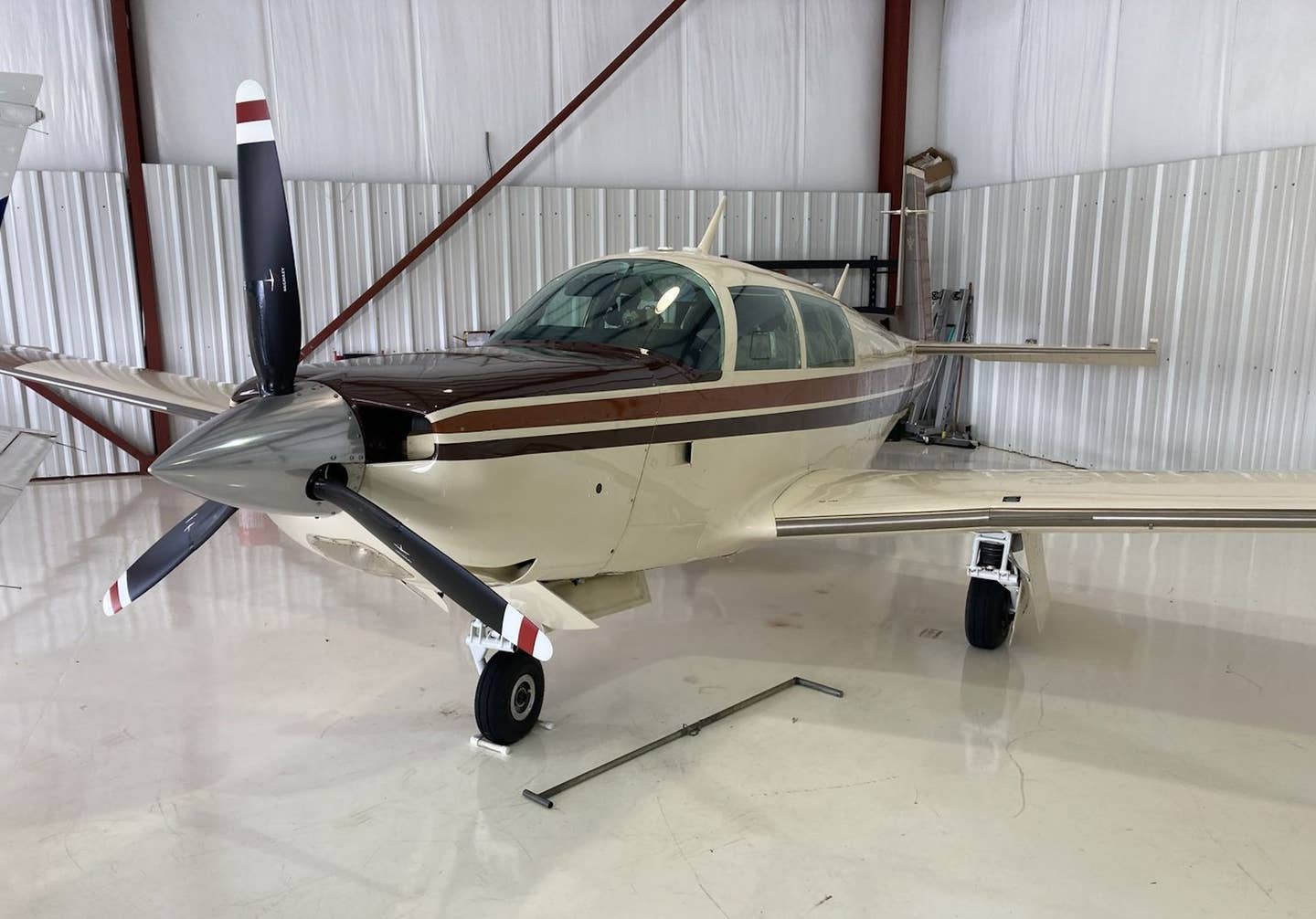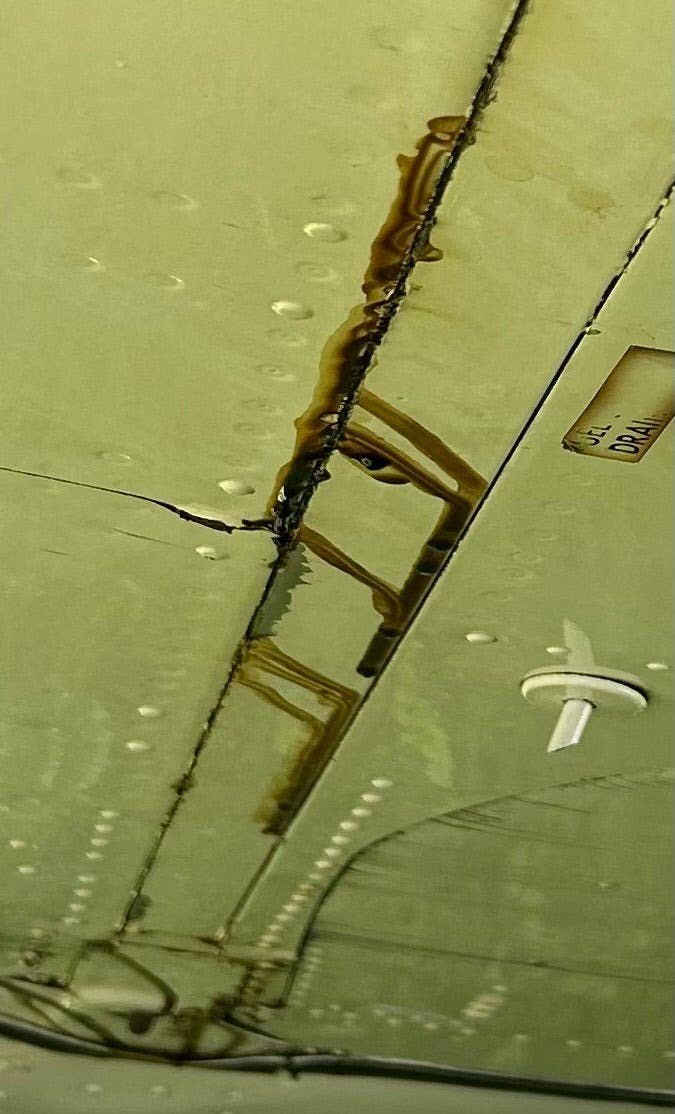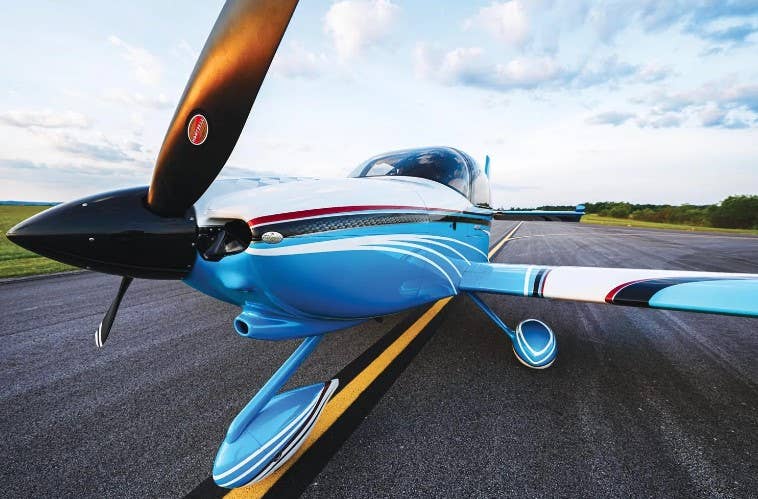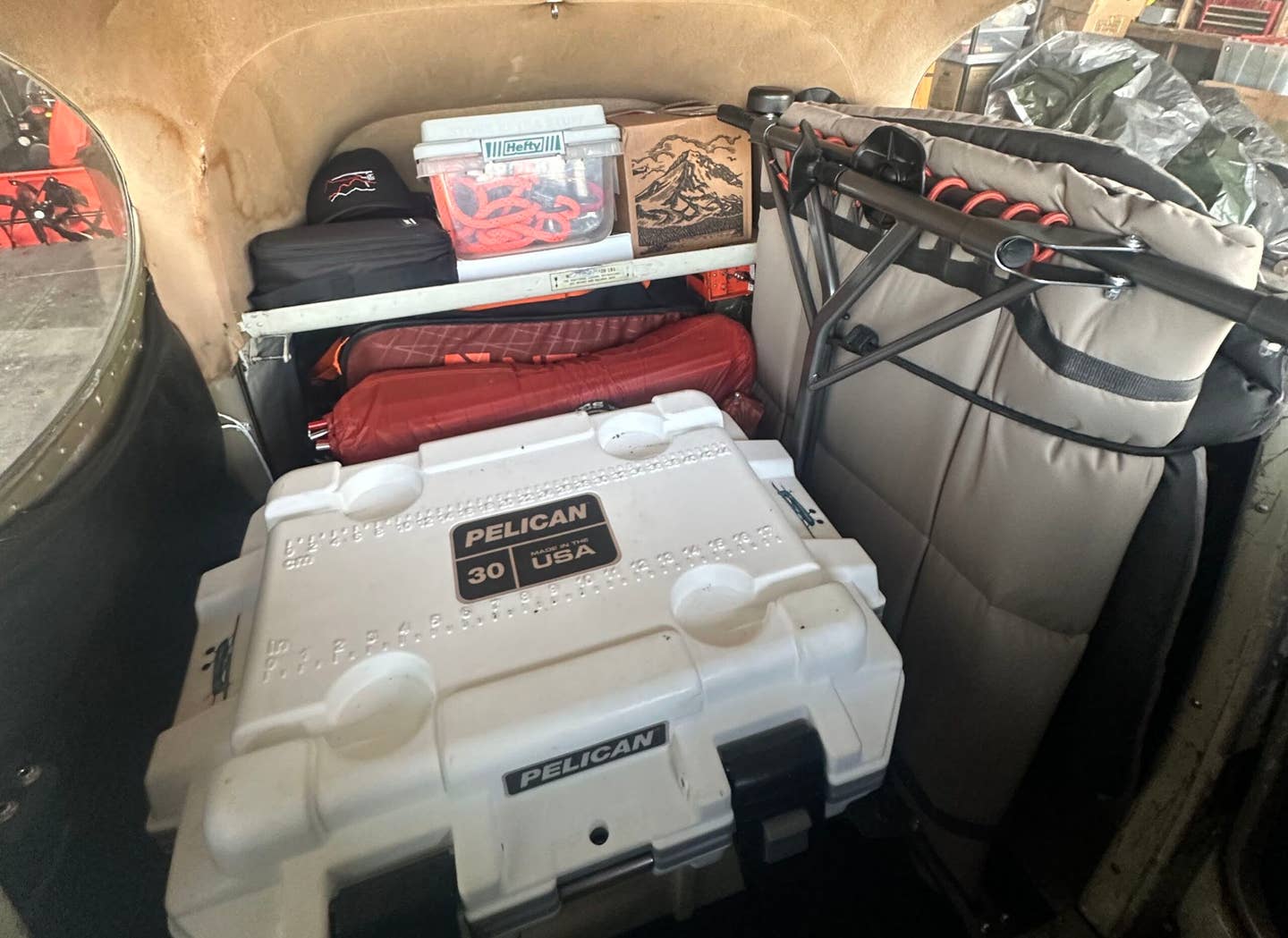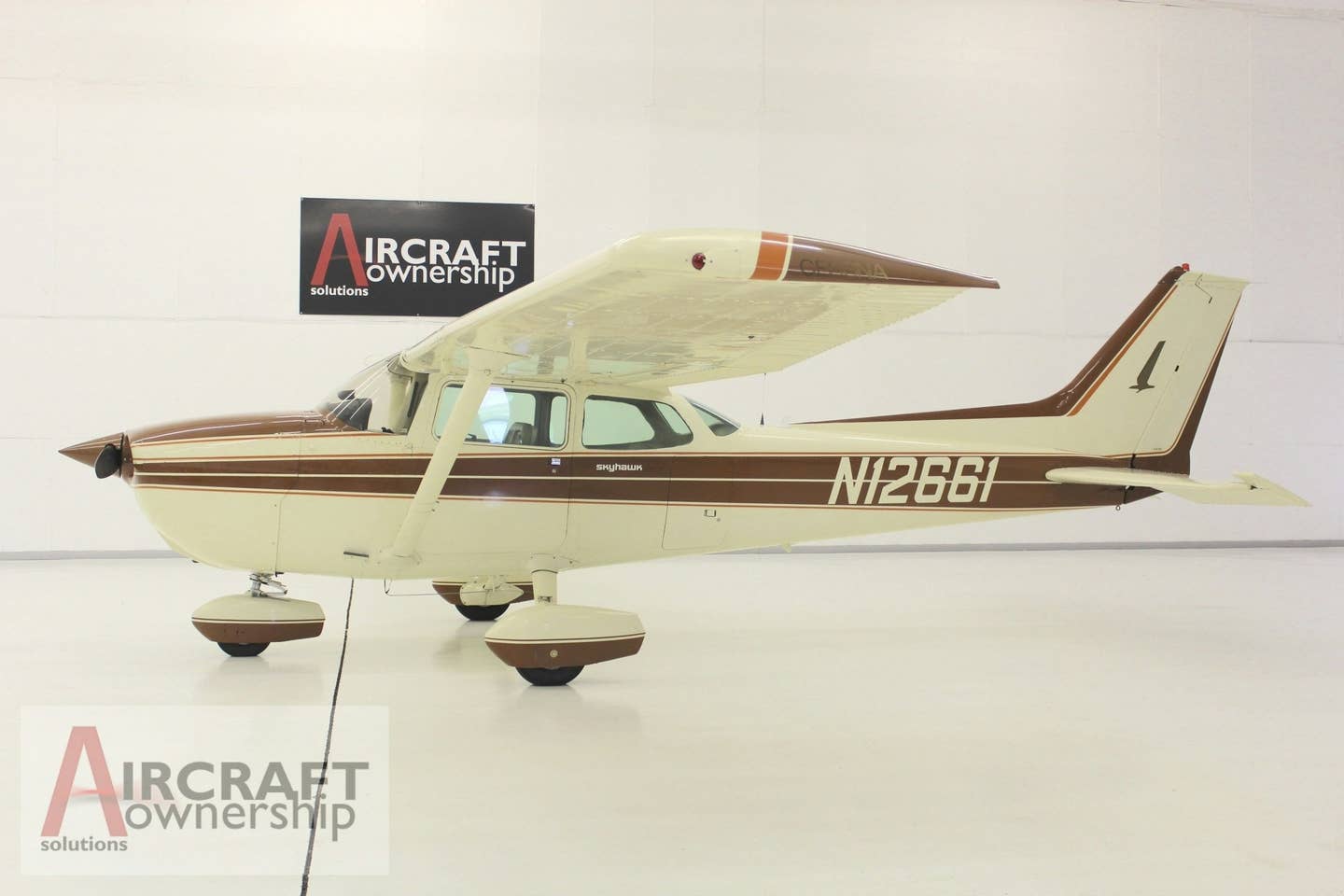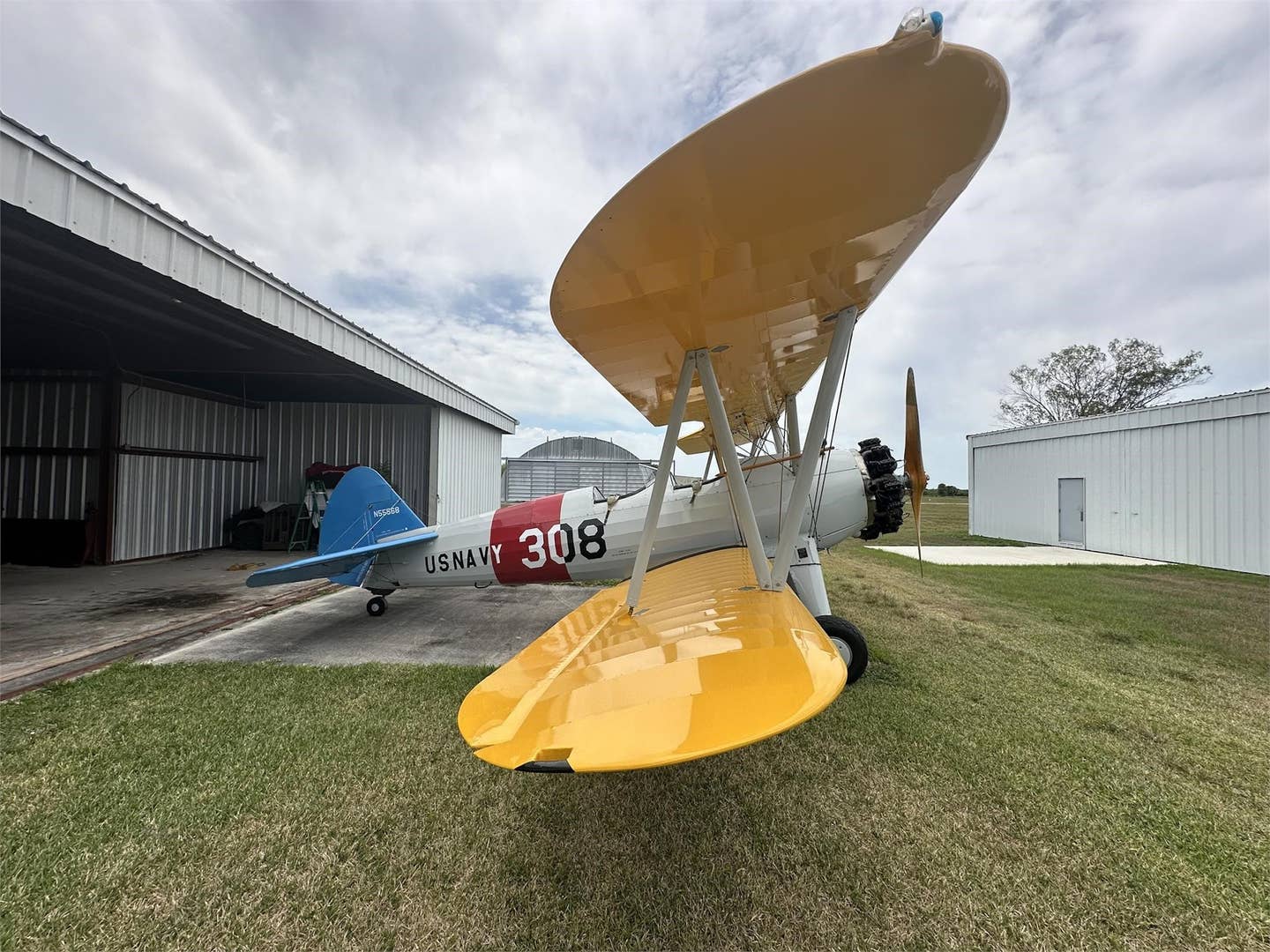We Fly: Just Aircraft SuperSTOL
No other airplane I’ve flown can do what the SuperSTOL can. STOL, as you know, stands for “short takeoff and landing.” SuperSTOL, then, implies really short takeoffs and landings, made possible by the airplane’s huge 45-degree fowler flaps and self-deploying leading-edge slats, designs borrowed from the Helio Courier bush plane and scaled to fit this diminutive two-seat experimental amateur-built kitplane.
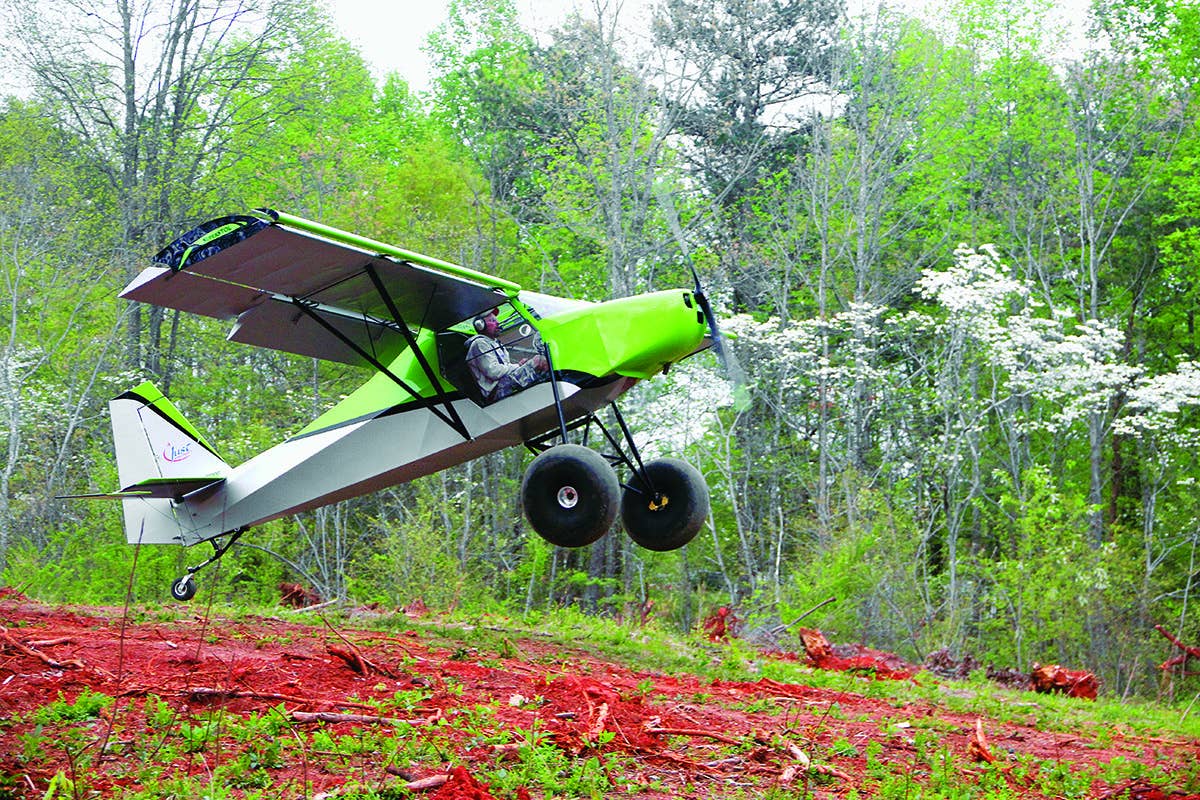
Just Aircraft SuperSTOL [Photo: Stephen Pope]
Editor's Note: This article, written by Stephen Pope, was previously published in 2014.
Work crews finished hauling away the largest of the rocks and muddy stumps only a few days ago, turning what had been a leafy hill behind the Just Aircraft factory in tiny Walhalla, South Carolina, into a rutted, scarred clearing barely the size of a football field. Even my host, company co-founder Troy Woodland, doesn’t condescend to calling this a runway. He banks steeply, turning short final in his lime-green and silver SuperSTOL kitplane, diving for the red-hued earth with what suddenly seems like questionable sanity.
“If this doesn’t make you a little nervous your first time out,” Woodland tells me over the intercom, “there’s probably something wrong with you.”
I’m not ashamed to admit it: I’m slightly nervous as the ground begins to rush all around us.
“But really,” he says, “you shouldn’t be nervous.”
He pours in a burst of power and smoothly pulls back on the stick. The SuperSTOL rises to follow the contour of the hill until Woodland abruptly chops the power. The world goes eerily quiet as the SuperSTOL announces it is finished flying—from a height of several feet and at a discomfortingly fast rate of descent we are falling. I brace for impact, but there is no bone-crushing arrival. Instead, the SuperSTOL’s nitrogen-charged shock absorbers and 29-inch tundra tires cushion the brunt of the abuse from our unorthodox landing. Woodland immediately gets on the brakes, glancing at me as we trundle over rocks and tree branches.
I am sitting in the left seat, grinning like an idiot.
This basic sequence is repeated perhaps two dozen times throughout the day as we drop into impossibly small parcels of land in and around Walhalla. Once firmly planted on the ground, Woodland wastes no time in putting his foot into the rudder to spin us back toward whence we’d come, applying full power and with effortless motions jabbing the stick forward for a brief instant and then wrenching it back while grasping the flap handle on the floor and raising it one notch. The combination of sudden forward momentum and additional lift from the flaps propels us into the air. We climb sharply. The airspeed indicator shows 35 miles per hour. The sensation is similar to being in a helicopter.
No other airplane I’ve flown can do what the SuperSTOL can. STOL, as you know, stands for “short takeoff and landing.” SuperSTOL, then, implies really short takeoffs and landings, made possible by the airplane’s huge 45-degree fowler flaps and self-deploying leading-edge slats, designs borrowed from the Helio Courier bush plane and scaled to fit this diminutive two-seat experimental amateur-built kitplane. The only vehicle I would confidently take on the mess of a surface we first landed on would be a farm tractor or a backhoe, I think to myself. Yet here we are in a rag-and-tube taildragger, lumbering over deep grooves, muddy furrows and jagged rocks as though it’s all perfectly normal.
Somehow, in this airplane, it is normal. By the end of the day I feel comfortable with everything we are doing. The nervousness has faded—and the reason is simple. The SuperSTOL lands at such slow speeds and has such a sturdy structure that, with each takeoff and landing, my confidence in the airplane’s incredible capabilities grows. What would have seemed unusual, in fact, would have been landing on an actual paved runway. Instead, Woodland and I drop into farm pastures, neighbors’ yards and steeply graded grass and mud fields bordered by trees, lakes and rivers underneath a 2,000-foot overcast lording over the smoky foothills of the Appalachians. What a way to spend a day.
Birth of the SuperSTOL
What’s truly amazing about this kitplane is that, if you have a few hundred feet of space in your yard and an extra $75,000 on hand [in 2014 dollars], you too can own this incredible airplane.
The world got its first glimpse of Just Aircraft’s SuperSTOL at Oshkosh in 2012, where it was an instant hit when Woodland and his business partner, Gary Schmitt, demonstrated the airplane in public for the first time. The SuperSTOL had actually been on the drawing board for close to 10 years. Woodland knew it was only a matter of time before he would build it. Just Aircraft had been selling a kitplane called the Highlander that offered many of the attributes Woodland saw as desirable for a personal bush plane, such as light weight, decent power, slow landing speed and available tundra tires. But to create the ultimate budget bush plane, changes were needed—radical changes.
The first modification Woodland designed for the SuperSTOL was its unique A-frame landing gear, a setup borrowed from the Pilatus Porter and further modified to incorporate shocks similar to those found on off-road trucks and ATVs. Next Woodland whipped up the engineering drawings for the SuperSTOL’s slats, which are designed to extend automatically any time the airspeed drops below 55 knots. As on other slat-equipped airplanes, they allow the wing to continue flying at a higher angle of attack and, in turn, a slower airspeed. In normal operations, Woodland says, the SuperSTOL’s tail actually stalls before the wing does—and it happens at an indicated airspeed of just 28 knots.
Woodland says he’s tried to get the airplane to spin but hasn’t succeeded yet. For the wing to stall, the SuperSTOL has to be at such a wild nose-up deck angle that he doesn’t try that very often either. The normal procedure for landing is to chop the power, hold the stick full aft and let the airplane drop, at 500 to 1,000 feet per minute, all the way to impact with the ground. There is no flare. There is no float. It’s the sort of abuse that would break most other airplanes. For the SuperSTOL, it’s routine.
Another key piece of the development effort was convincing Sensenich to develop a new 82-inch climb prop to pair with the SuperSTOL’s Rotax 912ULS engine. Woodland’s personal airplane, a self-described test mule, has a Kiev climb prop built in Ukraine and a big-bore kit for the engine that bumps horsepower from 100 to 110. The combination allowed us to get off the ground in about 100 feet on the shortest runs, though Woodland says he generally likes to use every foot of available takeoff space before hauling the SuperSTOL into the air. Some early SuperSTOL kit builders have opted for much larger engines, up to 200 hp, which should provide mind-blowing short-field performance, especially with the new Sensenich prop.
Even a SuperSTOL with the stock Rotax 912ULS engine has a published takeoff ground roll of just 275 feet at the airplane’s max gross weight of 1,320 pounds, the typical limit for LSAs. Another thoughtful design element is the airplane’s folding wing, which allows easy storage in a garage or shed. With the wings folded back, the SuperSTOL measures 21 feet, 8 inches long and just 8 feet, 6 inches wide. Landing ground roll is about 100 feet with help from the SuperSTOL’s big Matco disc brakes, meaning this truly can be a backyard airplane for a good number of people.
Still, it’s not the ideal choice for long-haul travel—or even medium-haul travel. Typical cruise speed with those big tires hanging in the breeze is a leisurely 87 knots. But with its 24-gallon gas tank and the Rotax’s economical fuel burn, endurance is exceptional. And in the air the SuperSTOL feels like a lot of LSAs we’ve flown. The controls demand a light touch, especially the ailerons. To keep the ball centered, it’s best to lead turns with the rudder, applying almost imperceptible input in the direction of the turn with the stick. I noted the airplane we flew rode a little nose-high in cruise, something Woodland said he’s working to tweak through adjustment of the horizontal stabilizer’s angle of incidence.
Carolina Bush Flying
Where the SuperSTOL shines brightest, of course, is during takeoff and landing. My introduction to the airplane came at Sun ‘n Fun in Lakeland, Florida, this past spring. Woodland and I flew a customer’s airplane from Paradise City, the small grass runway reserved for ultralights, LSAs and small helicopters. We couldn’t leave the area due to a TFR blanketing the airport during the afternoon airshow, so we were stuck in the pattern, where the breezy crosswind had swung around to become a 10-knot tailwind. Even so, Woodland had the SuperSTOL down and stopped in about 100 feet. Even though the conditions weren’t ideal, the airplane intrigued me. I agreed to come to Walhalla for some real bush flying.
When I showed up at his door a couple of weeks later, Woodland delivered on his promise to show off the SuperSTOL’s unrivaled capabilities in its true elements. After we’d made several takeoffs and landings on the newly cleared strip behind the factory and on another grass runway running from a lake in a ravine to the top of the hill in front of the one-story concrete-block factory, we headed for the Tugaloo River on the border with Georgia, the site of our next improbable landing.
“I’d like to drop in and say hello to a friend,” Woodland said, setting up for final toward another hill with a thin cutout in the trees, atop which sat a white plantation-style mansion. The handsome home had black shutters and a grand entryway flanked by four tall columns. As we slowed for final, the slats deployed with a subtle clunk—it wasn’t really jarring, but no matter how many times it happened throughout the day, it was always a surprise to me.
Descending below the tree line, Woodland pulled the power and eased the stick back. The SuperSTOL dropped onto the lawn and rolled to a stop in the shadow of two enormous oak trees. He shut the engine down and we climbed out to greet the home’s owner, Chip Angel, who offered us handshakes and fresh-brewed coffee. As we chatted and began looking over the airplane, Troy and I noticed that we’d been flying around with a 5-foot-long tree branch entwined in the tailwheel. From the reddish color of the dried mud there was no doubt that we’d picked it up on a previous landing back at the Just Aircraft factory. Woodland gave the branch a good tug and tossed it aside — to the delight of Angel’s golden retriever, who joyfully snatched it with his teeth and bounded up onto the porch.
With the offending stick removed and our coffee cups emptied, we bid farewell to our host and climbed aboard the airplane, rocketing back into the sky and banking sharply for home. After several more takeoffs and landings on the muddy hill, we shut down and headed inside the 32,000-square-foot factory for a closer look at the Just Aircraft operation. It was a surprisingly busy place, with dozens of workers and customers cranking wrenches.
Woodland and Schmitt founded Just Aircraft in 2002, starting out with a kitplane called the Escapade that’s reminiscent of a Kitfox. That airplane evolved into the Highlander, which quickly earned a reputation as a decent STOL performer. Still, Woodland knew that he and Schmitt could do better. Working from a pile of engineering drawings at home on his kitchen table, he started with the basic pre-welded steel frame from the Highlander and began incorporating all the touches that turned a fine STOL airplane into a SuperSTOL. The prototype was completed just days before the start of Oshkosh 2012.
After seeing the airplane in action, would-be customers began lining up asking when they could buy one. That set into motion plans for full-scale production of a kit, demand for which is exploding. Woodland said nearly 100 SuperSTOL kits have been shipped so far, and production is nearly sold out for the rest of this year. About 90 percent of all new orders are for the SuperSTOL versus the Highlander, Woodland said, despite the Highlander’s lower price.
Building the SuperSTOL
Only a handful of SuperSTOLs have been completed so far, but more are taking to the sky all the time. Build times are expected to average between 500 and 1,000 hours, which is typical of several other homebuilt models. The basic kit [in 2014 dollars] costs $36,650 and includes everything from the firewall back, save for the cockpit instruments. The base engine, prop and cowl add $27,000 to the total price, while the instrument panel can set a builder back anywhere from $5,000 to perhaps $15,000. To save money, Woodland said he pieced together his lime-green SuperSTOL using a rebuilt engine and used tires.
As for the true performance of the airplane, early SuperSTOL pilots are still in test-pilot territory. Woodland said it took him hours of flying the airplane with the flaps and slats extended before he truly began to appreciate just what the SuperSTOL can do in the air. With around 800 hours under his belt, he has a pretty good feel for its capabilities. Still, he said Just Aircraft plans to hire an independent flight-test company soon to really wring out the airplane and define the full performance envelope.
One thing is for certain: The SuperSTOL couldn’t achieve its performance goals without the clever technology Woodland has incorporated into the design, especially the slat design. What was a little unnerving about the slats to me is that they often deploy asymmetrically, with only one slat popping out initially followed a moment later by the other. It doesn’t really affect controllability, however, and when the slats are deployed for landing they stay out. Unlike the design of the Helio Courier, which has slats that slide out on tubes, the SuperSTOL’s slats pop in and out on short arms that fold flush against the wing at higher airspeeds. It’s an ingeniously simple setup that saves on weight, cost and complexity.
The SuperSTOL’s shock absorbers, meanwhile, are built in California by a company called Fox Factory Inc., a name well known to ATV and off-road enthusiasts. Woodland says the shocks, with 6 inches of suspension travel, were carefully tuned through trial and error to dampen them and allow for drop-in landings. The design works perfectly, with no chance of a bounced landing and little danger of a nose-over even with maximum braking. Proper transition training, of course, is an absolute must for pilots new to the SuperSTOL.
Visibility from the cockpit is superb, with all-Plexiglas doors and even a Plexiglas ceiling that lets in lots of natural light. The interior is roomy for an LSA, with plenty of elbow room and a large baggage area just behind the seats. Woodland said there’s no worrying about how much weight is loaded into the rear cargo area (as long as you stay under max gross, of course) and that the airplane flies better with some weight in the back.
| Typical Price $75,000 | Max Usable Fuel 24 gallons |
| Engine Rotax 912ULS, 100 hp | Full Fuel Payload 420 pounds |
| Propeller Catto two-blade 82-inch diameter | Max Rate of Climb 1,000 feet per minute |
| Seats 2 | Never Exceed Speed (Vne) 104 knots |
| Length 19 feet , 10 inches | Range 390 nautical miles |
| Height 8 feet | Stalling Speed, Flaps Up 32 knots |
| Wingspan 30 feet, 1 inch | Stalling Speed, Full Flaps 28 knots |
| Wing Area 132 square feet | Takeoff Distance 275 feet |
| Max Takeoff Weight 1,320 pounds | Takeoff Distance Over 50 Feet 750 feet |
| Empty Weight 750 pounds | Landing Distance 100 feet |
| Useful Load 570 pounds | Landing Distance Over 50 Feet 300 feet |
The Verdict
As I toured the factory, finishing touches were being put on the first of two SuperSTOLs preparing to compete this year at the Valdez STOL competition in Alaska. While the SuperSTOL wasn’t intentionally designed for Valdez, it may as well have been. I wouldn’t be surprised if in the future this airplane dominates the competition there — especially as Just Aircraft and clever builders incorporate further enhancements and refinements into the design.
The SuperSTOL isn’t for every pilot, but if what you crave is a go-anywhere bush plane that’s built like a tank — and you have the patience and mechanical aptitude to build your own airplane — there’s probably no better choice. The price is reasonable compared with most production LSAs, and there’s not another airplane out there that can do what the SuperSTOL can. Woodland said he likes to think of it as an aerial ATV. And really, that’s the perfect description. You can fly a SuperSTOL from your yard and head off on excursions and adventures that will introduce you to a side of aviation unlike what most other pilots will ever get to experience. Best of all, you’ll be having so much fun you won’t be able to wipe the grin off your face.

Subscribe to Our Newsletter
Get the latest FLYING stories delivered directly to your inbox

